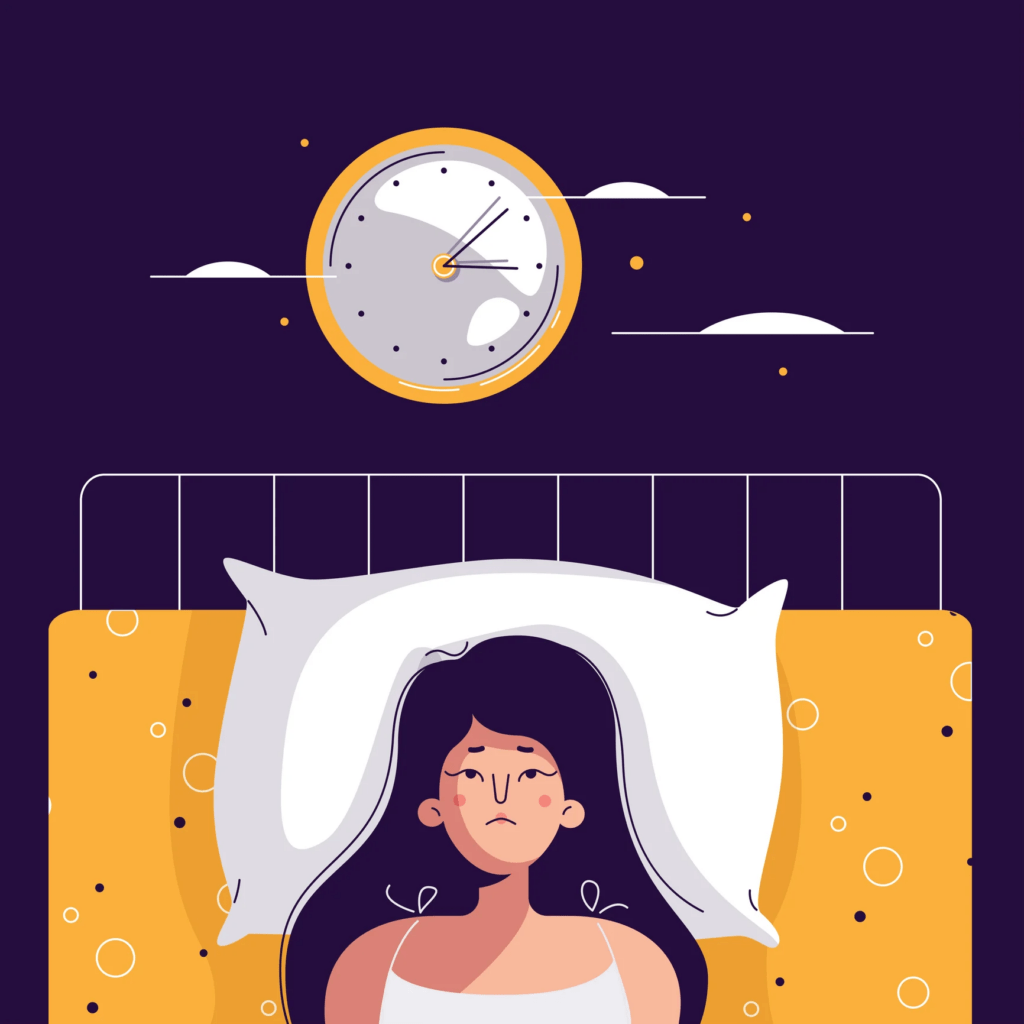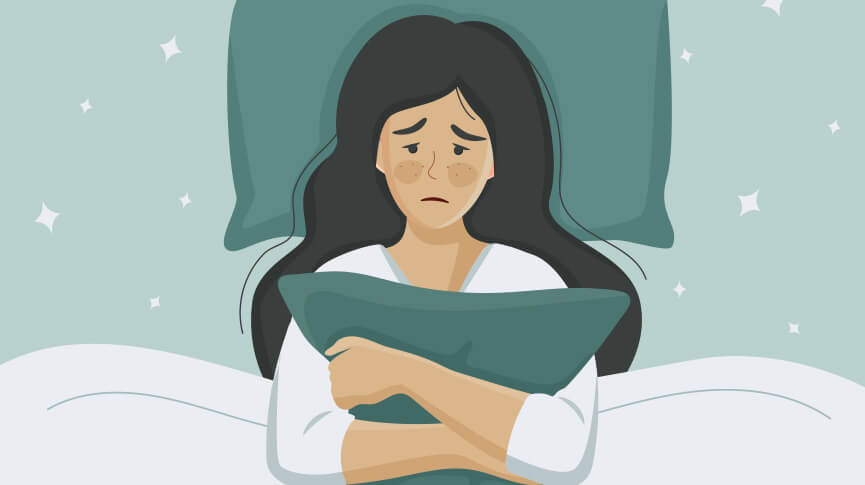A good night’s sleep is a necessity to have a fresh start to the day. Insomnia is one of the most common sleep disorders due to which people feel unable to get on with their day as they may be low on energy, tired, out of focus, and even suffer from headaches. Insomnia takes a toll on the physical health and mental health of the person suffering.
As per the Diagnostic and Statistical Manual of Mental Disorders, 5th edition (DSM-5), insomnia is a sleep-wake disorder with complications in falling asleep, staying asleep, or early morning awakenings more than three times per week for more than three months, and is associated with subjective poor sleep quality, as well as daytime dysfunction.
The prevalence of chronic insomnia is experienced by roughly about 30 per cent of the general population. Insomnia often exists as an independent condition or as a feature/ symptom of other conditions.

Symptoms of insomnia
Insomnia can occur in conditions of chronic illnesses and pain, mental and psychiatric problems like depression and anxiety, or due to certain medications.
Insomniac symptoms are experienced by a third of all adults. Six to ten percent of all adults have symptoms severe enough to meet the diagnostic standards. Symptoms of insomnia include poor sleep patterns, trouble falling asleep, difficulty sustaining sleep, and hardship falling back asleep after waking up in the morning.
A meta-analysis indicated that the prevalence of Insomnia is lopsided in terms of gender. Women are more affected by Insomnia than men, as per the studies. This meta-analysis was done particularly to examine the gendered prevalence of the disorder according to the guidelines of international diagnostic criteria
These primary symptoms further manifest in one’s life as other problems like headaches, irregularity in sleep patterns, distress during the daytime, fatigue, problems in functioning during the day, cranky and irritable moods, along with remembering, focusing and concentration problems throughout the day.
Insomnia also negatively affects work productivity leading to absenteeism, concentration problems, inability to perform tasks correctly, and faulty decision making. Along with decreasing work productivity, insomnia increases the chance of an accident occurring. Insomniacs are 2.5 to 4.5 times more likely to have accidents. Insomnia not only has physiological repercussions but also affects mental health and an individual’s quality of life.
Also read: “(Don’t) Sleep On It”: Talking About Gender Sleep Gap In India

There are various types of insomnia and the most common of all are chronic and acute insomnia. Acute insomnia is characterised by brief, short-term sleeping problems that last not more than a few weeks. Chronic insomnia, on the other hand, includes sleeping difficulties that occur regularly for three or more days a week for three months or more.
Acute insomnia is caused by changes in sleeping habits and patterns, stress-inducing situations, traumatic events, jetlag, and other things that may temporarily disturb one’s sleeping patterns.
Chronic insomnia is caused by chronic pain problems, psychological problems like depression, substance abuse, post-traumatic stress disorder etc. Other sleep disorders and health conditions like cancer, diabetes, and sleep apnea can cause chronic insomnia.
Treatment and relief for insomnia come in a variety of options including therapy, medications, and home remedies. While treating insomnia, two aims are kept in mind: to improve the quality of sleep and its duration, and to diminish the further implications that it has during the day.
The reason for a greater occurrence of insomnia in women is because of numerous reasons. Poor socio-economic conditions of women like lower income, lesser educational qualifications, poorer living conditions, etc., amplify the chances of insomnia for females
CBT-I or Cognitive behavioural therapy for insomnia is a specific, first-in-line treatment for chronic insomnia as suggested by the American College of Physicians (ACP). CBT-I is conducted by a licenced psychologist who attempts to replace the apprehensions and anxieties connected to sleep with a healthier mindset and attitudes by acknowledging these anxieties.

Medication for insomnia should not be taken without consultation with a doctor. Often, starting medication is seen as the last resort. There are several categories of drugs, one should start any medicine only after discussing it with their doctor. Checking in with a sleep specialist is always a good idea in case you have symptoms of insomnia.
Insomnia and gender
A meta-analysis indicated that the prevalence of Insomnia is lopsided in terms of gender. Women are more affected by Insomnia than men, as per the studies. This meta-analysis was done particularly to examine the gendered prevalence of the disorder according to the guidelines of international diagnostic criteria.
The reason for a greater occurrence of insomnia in women is because of numerous reasons. Poor socio-economic conditions of women like lower income, lesser educational qualifications, poorer living conditions, etc., amplify the chances of insomnia for females.
Similarly, females are also more exposed to suffering from specific physical problems than men are. For example, back problems and osteoporosis occur more in women. In addition, women have an increased risk of developing some psychiatric and mental health issues like depression and anxiety owing to their gendered realities and biological composition.

Depression is more than 50 percent higher in women than in men. Hormones during and before the menstrual cycle and at menopause may also play a role in increasing the risk of Insomnia in women. Pregnancy in women and the post-childbirth period also decreases the quality and amount of sleep they get.
The increased risk of insomnia has serious consequences on female health when they are already in a disadvantaged position. Other risk factors for insomnia include race, age, and medical conditions. Insomnia is a very under-investigated condition that requires more dialogue and awareness.
Also read: The Late-Night Diary Of An Anxiety-Ridden Insomniac
Featured Image Source: Intimina
About the author(s)
Tuba is currently pursuing an Undergraduate Degree in political science, at the Delhi University. She likes reading about current affairs and also loves cats, movies, k-dramas, chai, and staying in. At other times, you would probably find her taking pictures of the sky, if not listening to music




